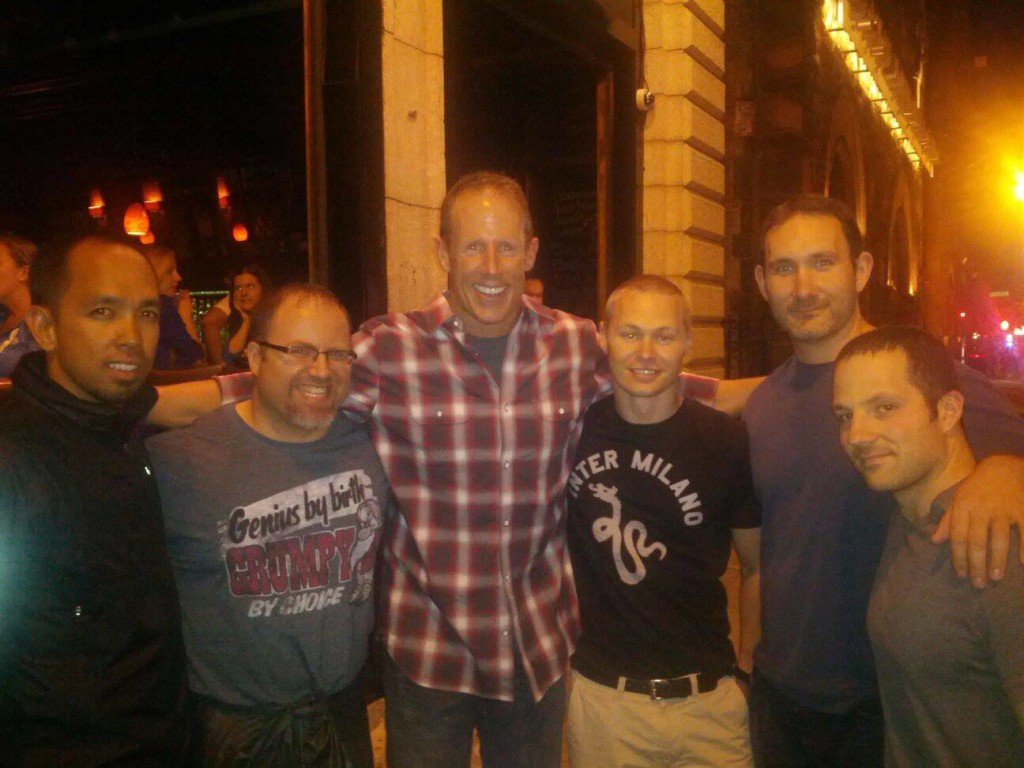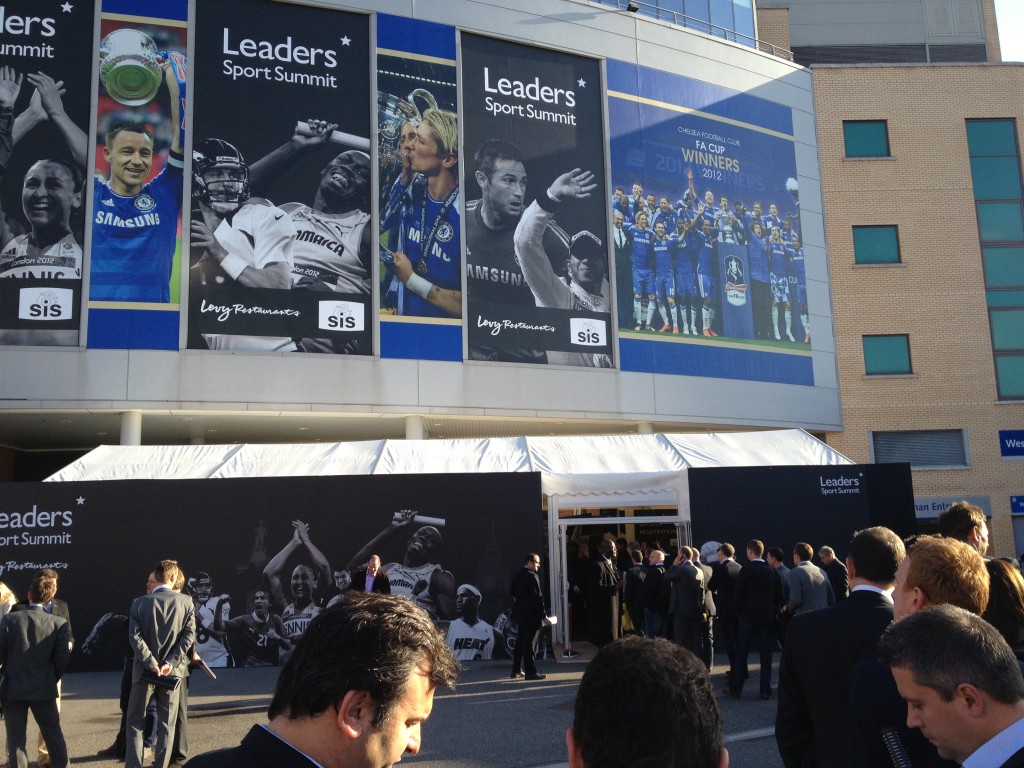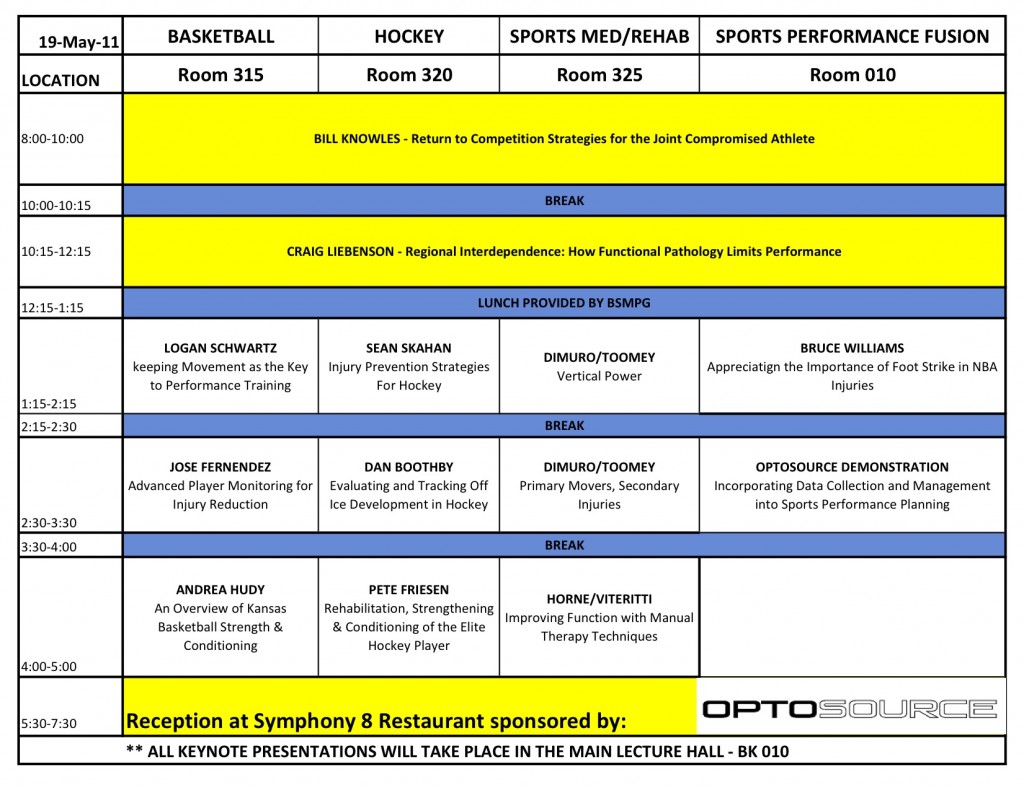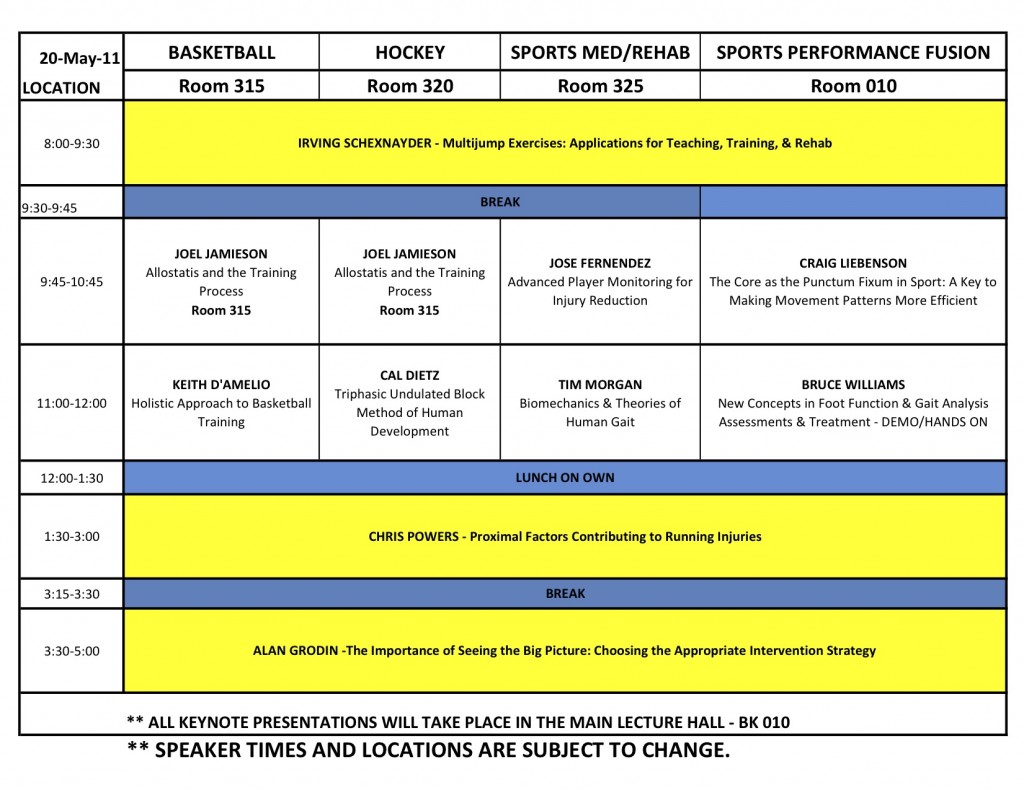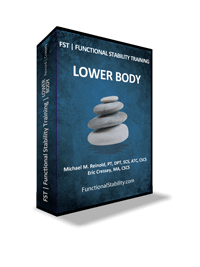 On the week of June 18, the National Track & Field Championships were held in Moncton, New Brunswick. I was here with our group from Edmonton and was fortunate to have a little downtime throughout the week. Because of this, I was able to get in a little continuing education time. That same week Mike Reinold and Eric Cressey also released their Functional Stability Training for the Lower Body as a follow up to their Functional Stability Training for the Core so naturally it was an easy fit. It's quite a lengthy program - I have yet to get through it all - but I was able to jot some notes down along the way. This summary was a culmination of several updated posts. Training the Hip for FST for the Lower Body
Assessing Lower Body Alignment and Movement (Lab)
Preparing the Adductors for Health and Performance
Hip Internal Rotation Deficits: Why You Have Them and What to Do About Them (Lab)
Training the Foot and Ankle for FST for the Lower Body
Understanding and Implementing Neuromuscular Control Progressions into Your Programs (Lecture) / How to Integrate Neuromuscular Control Progressions (Lab)
Developing Lower Extremity Strength and Power Outside the Sagittal Plane (Lab)
0 Comments
Thank you to Art Horne and his group at BSMPG. He goes out of his way to provide the opportunity for us, on a yearly basis, to come together and learn from the best.
Like last year - and each year prior - the 2013 edition of the summer seminar was one of "educational conducivity". One where colleagues, old and new, can come together to both learn in the setting of a traditional conference as well as indirectly in the relaxed atmosphere of a bar/restaurant. And for me, it currently is about how I personally can take the next step forward in my lifelong, professional journey. So here are my thoughts: Marvin Chun kicked off the conference with his lecture on "Vision Training - Making a Difference". Having a decent understanding of the relationship between visual perception and brain processing (i.e. Sleights of Mind), it was nice to hear Marvin state, "how we see the world, fundamentally governs what we see." I think this statement is relevant in many contexts, from performance to patient care, and really consolidates the brain's role in all aspects of our life. Something we must continually be reminded of. Adrian Louw followed, discussing "A Neuroscience Approach to Low Back Pain in Athletes". Not too disimilar to lectures by Lorimer Moseley, Adrian utilized humor and science to drill home the importance of looking beyond the tissues in athlete injury management. Similar to Dr. Chun, Dr. Louw utilized the important role of perception and the environment to stress the importance of "treating" the nervous system. He stated clearly that teaching the patient rapidly influences this system. Dr. Louw's presentation was one that resonated very well with me and I'm glad others had the opportunity to be exposed to a more-than-tissue approach to low back pain. I'd love to go into great detail with his lecture but simple background reading can be found in this paper. Marco Cardinale, formerly of Great Britain, is an individual whom I've had the pleasure of hearing twice in three weeks. Speaking about "Strength and Conditioning in the Real World", Marco's sub-section of 100 things, 1% better was perhaps the highlight of his talk. From vascular occlusion training to caffeine infested chewing gum (15 min pre-competition) to the importance of staying warm right up until competition, I walked away from his talk with practical ideas that I can immediately integrate. Here's what Thomas Lam had to say about Marco's talk. In addition to the keynote lectures, such as Stuart McGill's, at this conference were several break out lectures. Two of which were Val Nasedkin's and Joel Jamieson's. Perhaps the key lesson learned from Val's was that we NEED to decrease the cost of creating energy, via the facilitation of biological adaptations (which may or may not lead to transfer) to decrease the energy cost of performance. And from Joel's I walked away with a greater understanding of specific recovery strategies as they apply to specific athlete presentations such as sympathetic and parasympathetic dominance. Finally, Fergus Connolly's talk on "The Art of Applied Sports Science for Competitive Advantage - 7 Principles" was one that was Leaders in Performance-esque, and was seemingly catered to the shot callers of crowd - even though it's applicability was for everyone. Stating clearly that "technology very rarely fails...(that) the failure occurs during implementation or the application", vividly reminded me that in this data-infested age of sports science, it truly isn't about collection, but more so about applicability. That sports science should truly be just a dashboard that provides information and indicators to help guide us (rather than rule us). Because what matters most is not how smart we are, but how much our athletes absorb. Here's a nice piece to give you greater insight into what Fergus is all about. Ultimately, the only way to describe the annual BSMPG event is by saying "you should have been there". Because truly, it is a conference that must be attended at least once in your professional lifetime. Be it the indirect (or direct - your call) networking, or the conference (experience) itself, without question it is an investment that I can truly say is worth every penny. Thanks to Patrick, Keith and Charlie, I recently had the privilege to attend the SPARQ summit in Portland, Oregon.
This summit of "discovery" and "passing knowledge" was one of learning, sharing, building and networking and included some heavy-hitter presenters from around the globe. In addition, interspersed between the presentations included several exciting Nike-led presentations including the FuelBand, Designed to Move, etc. While the days of having the time, energy and patience to provide full and detailed reports are long gone, here are highlights of some of my brain-engaging moments throughout the two days. From Gabriele Wulf:
From Michael Gervais:
From Aaron Coutts:
From Henk Kraaijenhof:
Vern Gambetta's "Building the Complete Athlete" video set is one of the resources that I have finally been able to get through and one that I enjoyed.
Consisting of 15 separate excellent-quality videos, Vern does a great job of providing a well rounded approach to athletic development. This video set which was derived from a filmed workshop given last fall in the UK, was essentially an extension of his book "Athletic Development: The Art & Science of Functional Sports Training". From his views on physical literacy, periodization, core strength, and work capacity training - amongst other topics - Vern provided us with 15-20 minute lectures that reminded me of Ted Talks. I would suggest that the only downside to this format was that they didn't really allow for more in-depth material. Sure you can find it in his book, but for a "product" I would have liked a little bit more detailed content within each lecture. That said, I could see myself referring back to these lectures quite regularly. That... or his blog. This important conference was recently held and although I wish I had attended, I cannot wait for the consensus to be published.
In the meantime, here are some highlights taken from the IIHF website.
This weekend found me at the National Jumps Conference organized by the Canadian Athletics Coaching Centre. Featuring the likes of Boo Shexnayder, Dan Pfaff and Nelio Moura, to say that I was privileged to attend would be an understatement.
Working closely with the team at UofA and the CACC, my primary objective for the conference was this: To immerse myself in the sport of athletics, and deepen my knowledge, to help improve and refine my day to day workings as an integrated sport medicine and performance professional. Therefore, from a harmonized training and therapeutic perspective, below are some concepts of what I took away: Please remember that this is solely based on my interpretation and potential confirmation bias :)
"...it is not so much (important) that one does all that he can, but that one does what is necessary".
"Many forms of training exist in the world today, but research confirms that a synthesis of these systems always leads one back to a classification scheme of BASIC BIOMOTOR ABILITIES".
I cannot thank the folks at the CACC and UofA enough for this opportunity. For those interested in athletics, the Canadian Athletics Coaching Centre website is highly educational and one built upon academics. There's a wealth of information, such as podcasts and lectures from expert coaches around the world, so I would highly encourage you to check it out. *Note: My good friend Thomas Lam also posted a nice review. Click on this link to check it out. . There comes a time when one must take their learning to another level. The Leaders in Performance conference was one of the five conferences within the Leaders Sports Summit program. Held on the grounds of Stamford Bridge of Chelsea FC in London, this full conference consisting of 1700 delegates was not only an opportunity for networking, but more importantly, a means to uncover applicable best practice strategies from multi-disciplinary panels of global leaders in sports today. With a conference of this magnitude and a delegate list of such high caliber, it was of utmost important for me to unravel the most practical of messages and lessons for my current day to day work. And unlike much of the educational conferences I am accustomed to attending, it is certainly easy to fall in awe of the glitz and glamour of the environment. Aside from the keynote lectures that started off each day, the sessions were formatted in a manner whereby leaders and experts sat together in a panel, sharing their knowledge and viewpoints in question and answer format. Thus, leading to insightful discussions of sports performance.
But amongst the discussions, it was clear to me that the most prominent message was the importance of a strong and foundation of culture in sports performance success. And inherent within this message, lies the inextricable being of the human. So without further ado, here is the summary. Day 1 Aspetar Pre-conference Sports Medicine Symposium
Keynote - Leading from the Top: How Team Culture Predicts Team Success
Fail to Plan? Plan to Fail: How to Get Your Team Ready for Action
The Perfect Storm: Innovation, Technology and Performance
Testing in the Pursuit of High Performance: The Do's and the Don'ts
Working in elite level sports, it is important for me to holistically understand all aspects of health and performance. As such, I felt that it is no one's responsibility but my own to improve my current knowledge relating to sport science, sport medicine and innovation.
Enter the SPIN Summit. For those of you unaware, the SPort INnovation Summit is a Canadian symposium for professional development and networking in the areas of applied sport science, sport medicine and innovation. Spear headed by Own the Podium, the theme of this year's summit was "optimizing the IST" - Integrated Support Team - in an attempt to challenge the IST toward continuous improvement in supporting the Canadian Coach driven – performance based model in high performance sport. Perhaps the main impetus for the theme of this year's summit was the question, "are we doing enough of what we need to do to arm the coaches to achieve podium performances?" as asked by Dr. John Kolb (Own the Podium Director of Sport Science, Medicine and Innovation). Because although meticulous planning, an uncompromising attitude and brilliant execution may be three key components to gold medal performances, in a coach driven, performance based model, the reality is that the coach cannot do it all. And often in an integrated system, many of the parties involved (service provider) may truly have their own plan or agenda. Thus, the suggestion of a shift toward a "strategies" approach was made. A strategies approach that, for example, includes such components as enhanced monitoring, recovery, and training adaptations. There was a lot to be learned from this summit but because some of the information disseminated is proprietary, below you will find some key take-aways from this three-day event. Day 1 The Summit was kickstarted by a presentation on Sports Medicine and the IST by Mike Wilkinson. It was made clear that the role of the medical team was to get athletes to train as the coach want's them to train. What this means is that come competition, we as medical professionals should be bored. As a huge advocate of consistency of care, it was a bittersweet pleasure to hear the comment that "there is still a battle to find practitioners to provide day to day care". A constant presence is the key to preventing injuries as this enables the ability to catch the little things. Yes, time and funding are limiting factors but with the effort and dedication that coaches and athletes put into training, it is only fair that they deserve a matched level of support from the IST. But with that must come a "culture of focused professionalism". That the members of the IST must be less of a distraction. Nobody wants a "Getty IST" member on their team, spending more time taking pictures than doing work. Trent Stellingwerff followed with a powerful lecture on the Multidisciplinary Approach to Nutritional Physiology. The main question he asked, and one that we should ask ourselves is, "what are the building blocks/substrates required to optimize the stimulus to achieve the desired response. In addition to a case study, he provided us with several examples of evidence-based key factors that may indeed be difference makers. For example, through a brief review of research, he stated that 20-25 g/kg of whey protein is the optimal dosage for both absorption and sustained muscle protein synthesis. He also stated that approximately 90 g/day is generally recommended (naturally this is individual dependent), ideally broken up throughout the day in increments that again maximizes absorption and protein synthesis - read, 3 x 20 is better than 9 x 10. He also reviewed the benefits of beta-alanine supplementation in the creation of the buffering agent, Carnosine. Much of the current research on this comes from Roger Harris, also the pioneer researcher on creatine, and that approximately 5 g/day is necessary to provide a 50% increase. I will caution that although there may be a direct correlation between muscle carnosine and performance, the greatest effect is seen only for muscle buffering events that last 60-240 seconds (i.e. middle distance runners and 200m swimmers) and as prescribed by a knowledgeable professional. Finally, he discussed the impact of nitrates on performance and the recent research pertaining to beetroot juice. Again, I would suggest a cautious prescription although the recommendation of 500mL/day over 3-5 days prior to competition was made. Please note that supplementation of beetroot juice may cause GI symptoms so prior to using in competition, Dr. Stellingwerff naturally recommended to first practice this strategy in training. One of my favorite lectures came from Dr. Charles Samuels on Sleep and Performance; an integrated approach. We all know that sleep is important but we often fail to assess sleep quality and quantity in our athletes. Prior to lecture, an important disclaimer was first made. That athletes who fall asleep within 30 minutes, have only brief awakenings while sleeping, and feel refreshed within an hour of waking on most days are likely normal sleepers. The importance of screening sleep in your athletes was stressed and that sleep forms the basis for recovery. Dr. Samuels highly suggested we read his paper, "Jet lag and travel fatigue: a comprehensive management plan for sport medicine physicians and high-performance support teams" but also reminded us that in a study of 220 athletes, approximately 31% slept less than 7 hours/night, 23% take longer than 30 min to fall asleep and 25% report dissatisfaction with their sleep quality. It is no question that we can all do a better job screening for sleep so for those of you who are interested in learning more, especially as it pertains to young athletes, I highly suggest you take a look at this document. Karen MacNeill provided us with suggestions on Crisis Management in the Face of Traumatic Events in Sport based on her experience with the 2010 Vancouver Olympics. The quote, "You cannot adjust the wind, but you can adjust your sails" was a reminder of the importance of planning and adhering to the plan in the event of crises in your sport and with that said, it was strongly suggested that each "team" develop a crisis intervention plan. Major Stephen Boyne of Defence Research and Development Canada provided us with a talk on Multidisciplinary Military Training; Analogies to Sport. This was an intriguing talk since elite sport differs very little to military when it comes to training and competition...other than shooting people of course. He suggested that "after operations, training is the most important activity a military undertakes". To me, the relevance to sport is loud and clear and much like the command-driven approach in the military, training in sport should be coach-driven as well. One key message that I hope was loud and clear was the importance of the "affective" component of training activity. That is, the mental toughness and resilience. So aside from the physical and cognitive, it is important that training programs must also simultaneously incorporate opportunities to improve adaptation in the presence of adversity. Breakout workshops were also scheduled into the summit and it was nice to see a large delegation of like-minded professionals in the Innovations in Strength & Conditioning workshop headed by Matt Jordan. This assessment-based workshop was unique as Matt utilized the expertise of Tyler Goodale, Chris Chapman and Matt Price to provide us with their expertise on the topics of assessment in each of warm-up, risk management and strength and power. While it is beyond the scope of this post to go into great detail, I want to bring attention to the fact that in this current age of social media, there are a plethora of hard working, stealth-like coaches in our country that receive a lot less recognition than they deserve. And I am glad to have met and spoken to several of them! Brenda Comfort led the second workshop I attended on Project Management. With my current role and interest in optimizing performance readiness, I felt that it was important for me to improve my understanding on the practical application of project management in high performance. The key take home message from this workshop was as simple as it sounds: Plan - Execute - Monitor - Control. Completing day one were two plenary sessions pertaining to Innovations for Gold. Jason Vescovi provided us with the practical application of GPS for Team Sports and Sam Blades provided us with a summary of Applications of the Multi Measurement System through Canada's most recent canoe/kayak success in London. Although these innovations may be beyond my own personal scope in my current setting, it was no doubt interesting to see how such innovations can take training and performance to the next level. Day 2 David Smith from the University of Calgary started off the second day providing us with some insight into Haemoglobin Mass as a Factor in Endurance Performance. Stating boldly that Hb [ ] has no impact relative to VO2 max, he instead suggested that Hb mass does - along with blood volume, via plasma volume - and that it is trainable up to 32 % improvement. He also suggested that Hb mass possesses stability, it may play a role in what excites many who are involved in sport today, talent identification. And that there may be a window of opportunity for trainability between 16-21 years of age. For those of you who are specifically interested in this realm, he suggested the work of Schmidt and Prommer, naturally in addition to his own work. Another one of my favorite lectures came from Maxime Trempe. His talk on Accelerating Motor Learning & Increasing Long-Term Performance in Elite Sport went into some detail on skill acquisition. Starting off by stating that he attempts to design training programs to maximize optimal learning is significant because sport has certainly evolved in terms of execution of motor skill. He provided us with a comparison of Olympic performances by Jean-Luc Brassard and Alexandre Bilodeau to express this clearly. For those of you familiar with this field, and specifically with coaching, you may resonate well with the following definitions he provided: Performance - punctual execution of a certain skill; vs Learning - long lasting changes in capacity to perform a certain skill. Clarifying further that, "what you do today may not be a predictor of what you learned tomorrow". He suggested that it is time that we start quantifying motor learning in light of the fact that we already quantify both physiology and biomechanics. He also disclosed that for learning to occur, athletes need to be successful on approximately 65% of trials in a given training session. Because "learning occurs between practices" and not within, he suggested the importance of post training process in the brain for the consolidation of motor learning. And for this reason, he is currently studying the influence sleep may have on this process. Although the summit ended with perspectives on key components for success - read podium performances - from both an athlete and coach perspective, lunch was bookended by the second session of workshops. The more I involve myself with higher level athletes, the more I realize the importance of performance readiness. As such, the two workshops I attended improved my understanding on fatigue monitoring and recovery, namely Hooper-MacKinnon Testing; a valuable tool in mastering the art of recovery and Sleep and Human Performance Questionnaire. Led by Judy Goss and Charles Samuels respectively, these workshops not only provided me with greater insight into the value of questionnaires, but also a better understanding of their specificity/sensitivity and the role that they may play. Because, regardless of what measures you may use, it is still important to realize that questionnaires must not only be reliable and valid, they must also be practical as well. While this summary cannot do justice to the amount of information shared during the summit, if you are interested in more specific details or journal articles pertaining to any of the above topics, please do not hesitate to contact me. Especially relating to the sleep lecture and workshop, I do have a lot of information to share. . 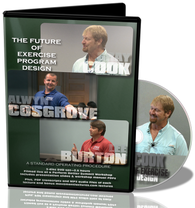 Several months ago I received Gray Cook's new DVD set, "Functional Movement Systems: Applying the model to real life examples" from Laree Draper of On Target Publications. While I have been meaning to post a review on this site for quite some time, life and learning has simply got in the way. Thankfully, I have the privilege of supervising several bright young "interns" throughout the year who use me for my library of books, dvds and articles to help with their own learning. Here is Dr. Elisabeth Pang's review of Gray's DVD set. She is a recent graduate of Logan Chiropractic College's Master's in Sport Science & Sports Rehabilitation Program. My first day at the clinic with Dr. Jeff, and I was welcomed by a stack of DVDs which were practically taller than me. On the top of the stack was “Functional Movement Systems: Applying the Model to Real Life Examples” by Gray Cook. But wait, I had just graduated from chiropractic college, so how much more did I have to learn? I already had my philosophies, my exam methodologies, my manual techniques and most importantly my small group of exercises to prescribe. Little did I know that watching this DVD would be an unexpected the start of a completely new way of thinking for me. Gray’s evident passion for creating respect and consistency within the manual therapy and fitness professions made me begin to look back at all that I had learnt. Immediately I was forced to respond to the questions he repeated:
After just the first hour of this DVD, Gray had already captivated me with his presentation capabilities, his thought processes and most importantly his explanations. Through asking tough but honest questions, I began to reconsider things I once thought I was sure about and for the next few hours I was pulled onto the proverbial “train” which was taking me towards a movement paradigm, one which I had not fully considered or understood before. After the introduction, Gray shifted into describing some of the foundational components of the Functional Movement Screen. What appeared to be a never-ending plethora of knowledge was at times overwhelming for somebody who had never been exposed to FMS, or Gray Cook before, however after revisiting some of the ideas it began to make complete sense. Gray then cemented it in as we saw real-life examples of people with movement dysfunctions and possible corrective strategies or limited time activity restrictions. The best part was that he chose people from all sorts of life; a young triathlete, a previous college athlete, an aged fitness guru, etc. – people who obviously move often, but not necessarily well. This helped to emphasize in my mind the previous mantra that athletes are the humans who have the best compensatory outputs. As a new comer into the movement paradigm shift, I am sure that I only picked out the basics of this methodology. However, a good foundation must come before all of the little nuances. With that, the following are points which stood out to me, and ones which I will need to remind myself of time and time again as I focus on becoming better versed in FMS;
Admittedly, this wealth of information and new way of thinking has given me a lot of work to do. But this DVD was a great starting point. It provided a solid base of knowledge with applicable examples to even further support FMS. He brought simplicity and logic to a system that strives to ensure minimum proficiency in movement and functional standards. For people who like me are new to Gray Cook and FMS, or even for those looking to further their comprehension of this approach this video is a great resource! Now, looking back I can understand why it was on the top of the pile of DVDs I had to work my way through (which yes, I am still in the process of doing). EDUCATIONAL CONDUCIVITY "Refers to how easily a conference lends itself for learning. Specifically related to education, how conducive is a place or space for learning, creative thinking, problem solving, and decision making. To educate yourself you need to go to a space that promotes discussions at the bar and allows you to concentrate and surround yourself with professionals that are smarter than you." (modified from idea-sandbox.com) Year after year, Art Horne and the gang at the Boston Sports Medicine and Performance Group host their anual Summer Seminar. Having heard nothing but positive feedback from colleagues who have attended in the past, I decided that this would be the year to finally attend. Living in Western Canada, it certainly isn't easy to travel across the continent both from a time and financial perspective, but I felt that in order to continually better myself as a professional, attendance was a must. Like many of my previous educational endeavors, it was important for me to be 100% confident that this event was grounded in "educational conducivity" and not just a place where many of my friends were going to be. However, upon looking at the speaker lineup, it was more difficult to convince myself not to attend. Perhaps the most challenging task however, was deciding which sessions to attend. So aside from the keynote lectures where all delegates were present, I found myself attending lectures from the following: Sean Skahan, Dr. John DiMuro & Mark Toomey, Art Horne & Dr. Pete Viteritti, Joel Jamieson, and Keith D'Amelio. *Please note that while I was a note taking machine, I am going to limit this post to an informal, point-form summary of my synaptic moments. . Bill Knowles (Keynote) - "Return to Competition Strategies for the Joint Compromised Athlete"
Dr. Craig Liebenson (Keynote) - "Regional Interdependence: How Functional Pathology Limits Performance"
Sean Skahan - Injury Prevention Strategies For Hockey
Dr. John DiMuro & Mark Toomey - "Primary Movers, Secondary Injuries"
Art Horne & Dr. Pete Viteritti - "Improving Function with Manual Therapy Techniques"
Irving "Boo" Schenxnayder (Keynote) - "Multijump Exercises: Applications for Teaching, Training, & Rehab"
Joel Jamieson - "Allostasis and the Training Process"
Keith D'Amelio - "Solving the Performance Equation"
Chris Powers (Keynote) - "Proximal Factors Contributing to Running Injuries"
|
